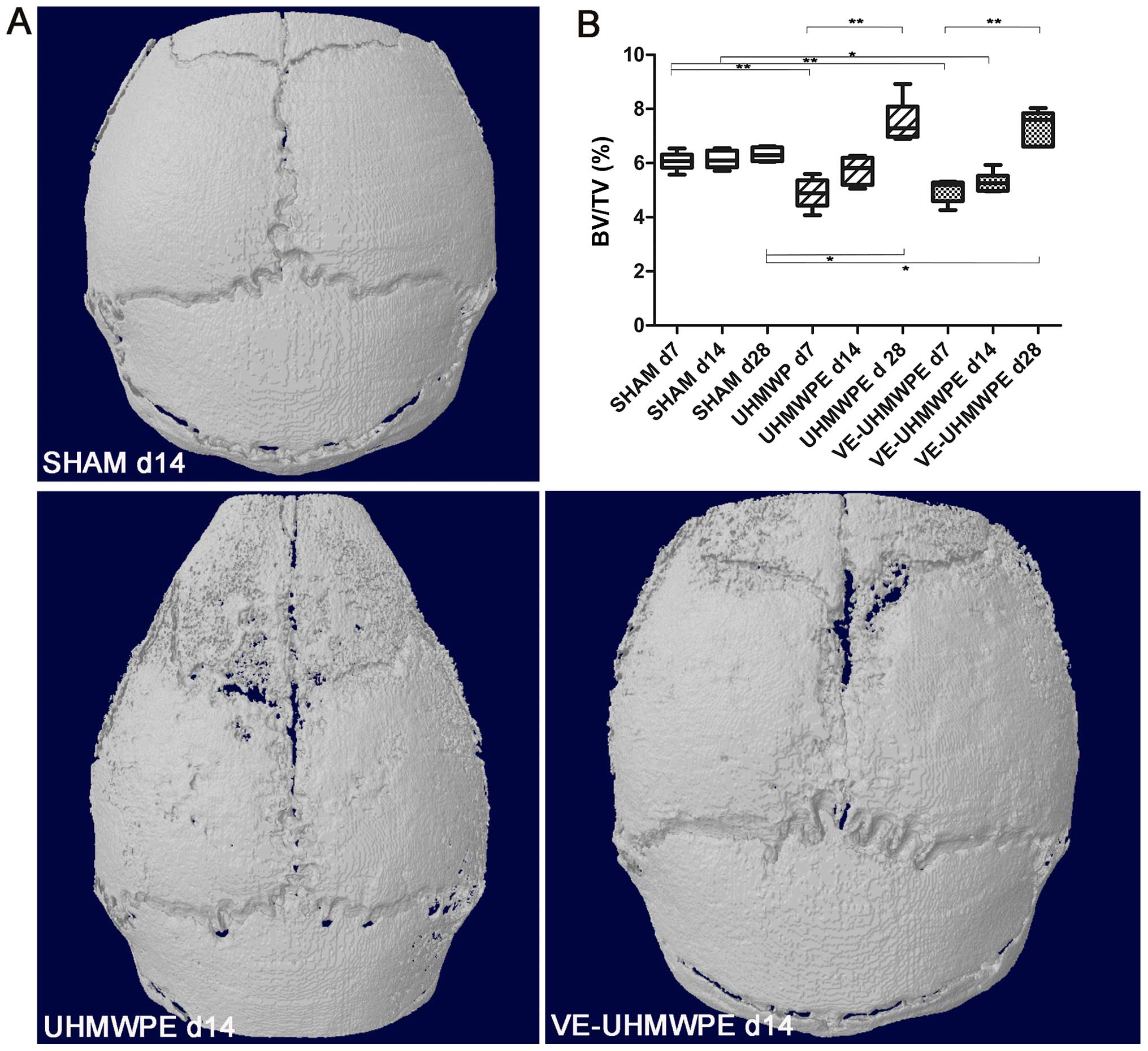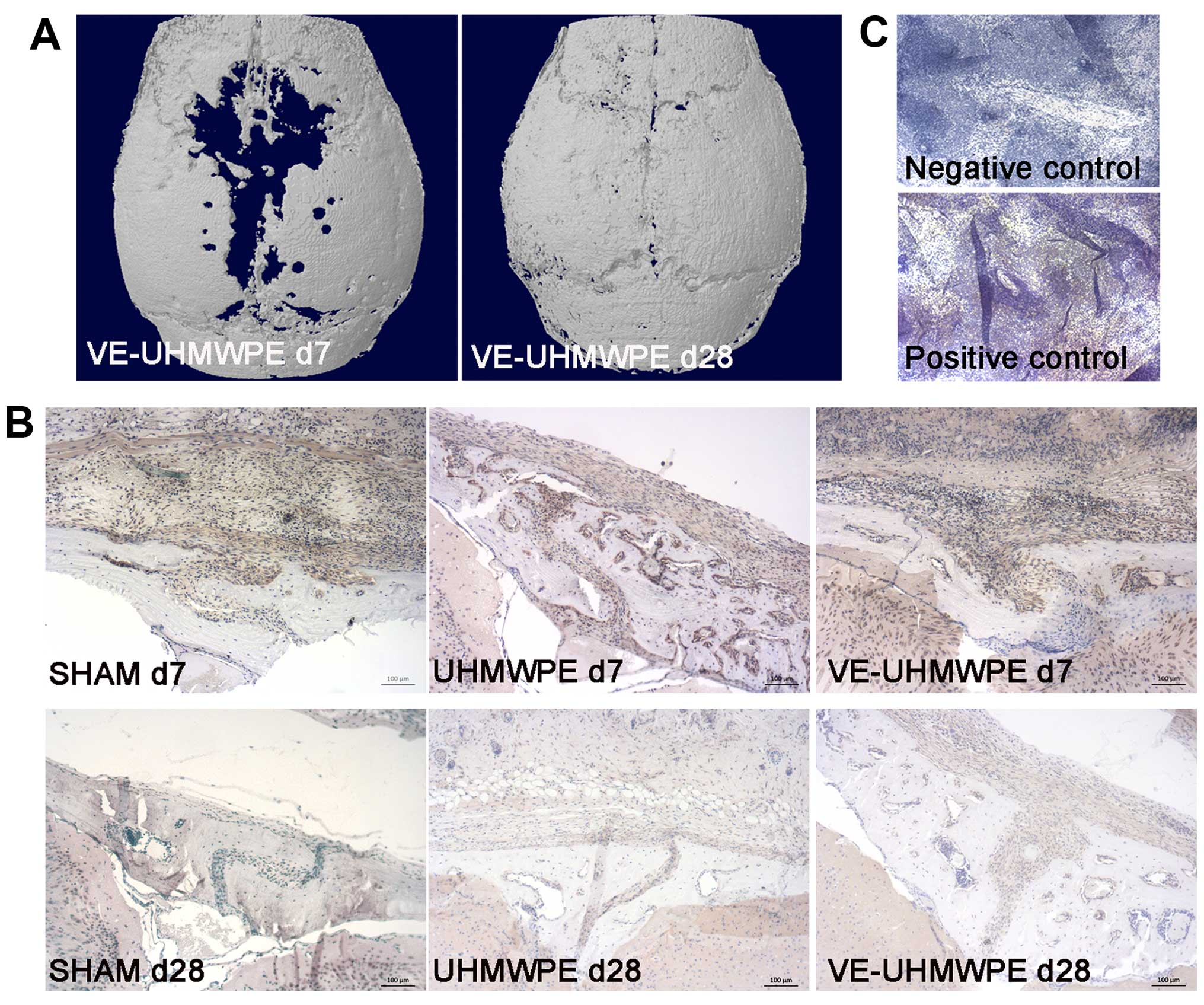|
1
|
Garellick G, Kärrholm J, Rogmark C,
Rolfson O and Herberts P: Swedish Hip Arthroplasty Register, Annual
Report 2011. Gothenburg, Sweden: 2012, ISBN: 978-91-980507-1-4
|
|
2
|
Jiang J, Yang CH, Lin Q, Yun XD and Xia
YY: Does arthroplasty provide better outcomes than internal
fixation a mid- and long-term followup? A meta-analysis. Clin
Orthop Relat Res. 473:2672–2679. 2015. View Article : Google Scholar : PubMed/NCBI
|
|
3
|
Learmonth ID, Young C and Rorabeck C: The
operation of the century: Total hip replacement. Lancet.
370:1508–1519. 2007. View Article : Google Scholar : PubMed/NCBI
|
|
4
|
Drees P, Eckardt A, Gay RE, Gay S and
Huber LC: Molecular pathways in aseptic loosening of orthopaedic
endoprosthesis. Biomed Tech (Berl). 53:93–103. 2008.In German.
View Article : Google Scholar
|
|
5
|
Rubash HE, Sinha RK, Shanbhag AS and Kim
SY: Pathogenesis of bone loss after total hip arthroplasty. Orthop
Clin North Am. 29:173–186. 1998. View Article : Google Scholar : PubMed/NCBI
|
|
6
|
Schmalzried TP, Jasty M and Harris WH:
Periprosthetic bone loss in total hip arthroplasty. Polyethylene
wear debris and the concept of the effective joint space. J Bone
Joint Surg Am. 74:849–863. 1992. View Article : Google Scholar : PubMed/NCBI
|
|
7
|
Grupp TM, Utzschneider S and Wimmer MA:
Biotribology in knee arthroplasty. BioMed Res Int. 2015:6189742015.
View Article : Google Scholar : PubMed/NCBI
|
|
8
|
Muratoglu OK, Bragdon CR, O'Connor DO,
Jasty M and Harris WH: A novel method of cross-linking
ultra-high-molecular-weight polyethylene to improve wear, reduce
oxidation, and retain mechanical properties. Recipient of the 1999
HAP Paul Award. J Arthroplasty. 16:149–160. 2001. View Article : Google Scholar : PubMed/NCBI
|
|
9
|
Thomas GE, Simpson DJ, Mehmood S, Taylor
A, McLardy-Smith P, Gill HS, Murray DW and Glyn-Jones S: The
seven-year wear of highly cross-linked polyethylene in total hip
arthroplasty: A double-blind, randomized controlled trial using
radiostereometric analysis. J Bone Joint Surg Am. 93:716–722. 2011.
View Article : Google Scholar : PubMed/NCBI
|
|
10
|
Oral E, Godleski Beckos C, Malhi AS and
Muratoglu OK: The effects of high dose irradiation on the
cross-linking of vitamin E-blended ultrahigh molecular weight
polyethylene. Biomaterials. 29:3557–3560. 2008. View Article : Google Scholar : PubMed/NCBI
|
|
11
|
Oral E, Wannomae KK, Rowell SL and
Muratoglu OK: Diffusion of vitamin E in ultra-high molecular weight
polyethylene. Biomaterials. 28:5225–5237. 2007. View Article : Google Scholar : PubMed/NCBI
|
|
12
|
Schwiesau J, Fritz B, Kutzner I, Bergmann
G and Grupp TM: CR TKA UHMWPE wear tested after artificial aging of
the vitamin E treated gliding component by simulating daily patient
activities. BioMed Res Int. 2014:5673742014. View Article : Google Scholar : PubMed/NCBI
|
|
13
|
Tashima CM, Hermes-Uliana C, Perles JV, de
Miranda Neto MH and Zanoni JN: Vitamins C and E
(ascorbate/α-tocopherol) provide synergistic neuroprotection in the
jejunum in experimental diabetes. Pathophysiology. 22:241–248.
2015. View Article : Google Scholar : PubMed/NCBI
|
|
14
|
Qian Y, Zeng BF, Zhang XL and Jiang Y:
High levels of substance P and CGRP in pseudosynovial fluid from
patients with aseptic loosening of their hip prosthesis. Acta
Orthop. 79:342–345. 2008. View Article : Google Scholar : PubMed/NCBI
|
|
15
|
Saxler G, Löer F, Skumavc M, Pförtner J
and Hanesch U: Localization of SP- and CGRP-immunopositive nerve
fibers in the hip joint of patients with painful osteoarthritis and
of patients with painless failed total hip arthroplasties. Eur J
Pain. 11:67–74. 2007. View Article : Google Scholar
|
|
16
|
Schinke T, Liese S, Priemel M, Haberland
M, Schilling AF, Catala-Lehnen P, Blicharski D, Rueger JM, Gagel
RF, Emeson RB and Amling M: Decreased bone formation and osteopenia
in mice lacking alpha-calcitonin gene-related peptide. J Bone Miner
Res. 19:2049–2056. 2004. View Article : Google Scholar : PubMed/NCBI
|
|
17
|
Kauther MD, Neuerburg C, Wefelnberg F,
Bachmann HS, Schlepper R, Hilken G, Broecker-Preuss M, Grabellus F,
Schilling AF, Jäger M and Wedemeyer C: RANKL-associated suppression
of particle-induced osteolysis in an aged model of calcitonin and
α-CGRP deficiency. Biomaterials. 34:2911–2919. 2013. View Article : Google Scholar : PubMed/NCBI
|
|
18
|
Neuerburg C, Wedemeyer C, Goedel J,
Schlepper R, Hilken G, Schwindenhammer B, Schilling AF, Jäger M and
Kauther MD: The role of calcitonin receptor signalling in
polyethylene particle-induced osteolysis. Acta Biomater.
14:125–132. 2015. View Article : Google Scholar
|
|
19
|
Wedemeyer C, Neuerburg C, Pfeiffer A,
Heckelei A, Bylski D, von Knoch F, Schinke T, Hilken G, Gosheger G,
von Knoch M, et al: Polyethylene particle-induced bone resorption
in alpha-calcitonin gene-related peptide-deficient mice. J Bone
Miner Res. 22:1011–1019. 2007. View Article : Google Scholar : PubMed/NCBI
|
|
20
|
Utzschneider S, Becker F, Grupp TM,
Sievers B, Paulus A, Gottschalk O and Jansson V: Inflammatory
response against different carbon fiber-reinforced PEEK wear
particles compared with UHMWPE in vivo. Acta Biomater. 6:4296–4304.
2010. View Article : Google Scholar : PubMed/NCBI
|
|
21
|
Standard Practice for Characterization of
Particles. American Society for Testing and Materials; West
Conshohocken: 2010
|
|
22
|
Wedemeyer C, Xu J, Neuerburg C,
Landgraeber S, Malyar NM, von Knoch F, Gosheger G, von Knoch M,
Löer F and Saxler G: Particle-induced osteolysis in
three-dimensional micro-computed tomography. Calcif Tissue Int.
81:394–402. 2007. View Article : Google Scholar : PubMed/NCBI
|
|
23
|
Bichara DA, Malchau E, Sillesen NH, Cakmak
S, Nielsen GP and Muratoglu OK: Vitamin E-diffused highly
cross-linked UHMWPE particles induce less osteolysis compared to
highly cross-linked virgin UHMWPE particles in vivo. J
Arthroplasty. 29(Suppl): 232–237. 2014. View Article : Google Scholar : PubMed/NCBI
|
|
24
|
Huang CH, Lu YC, Chang TK, Hsiao IL, Su
YC, Yeh ST, Fang HW and Huang CH: In vivo biological response to
highly cross-linked and vitamin e-doped polyethylene - a
particle-Induced osteolysis animal study. J Biomed Mater Res B Appl
Biomater. 104:561–567. 2016. View Article : Google Scholar
|
|
25
|
Gallo J, Slouf M and Goodman SB: The
relationship of polyethylene wear to particle size, distribution,
and number: A possible factor explaining the risk of osteolysis
after hip arthroplasty. J Biomed Mater Res B Appl Biomater.
94:171–177. 2010.PubMed/NCBI
|
|
26
|
Green TR, Fisher J, Stone M, Wroblewski BM
and Ingham E: Polyethylene particles of a 'critical size' are
necessary for the induction of cytokines by macrophages in vitro.
Biomaterials. 19:2297–2302. 1998. View Article : Google Scholar
|
|
27
|
Bezwada HP, Nazarian D and Booth R:
Acetabular wear in total hip arthroplasty. E-Medicine.com; pp.
1–15. 2004
|
|
28
|
Catelas I, Wimmer MA and Utzschneider S:
Polyethylene and metal wear particles: Characteristics and
biological effects. Semin Immunopathol. 33:257–271. 2011.
View Article : Google Scholar : PubMed/NCBI
|
|
29
|
Takahashi K, Onodera S, Tohyama H, Kwon
HJ, Honma K and Yasuda K: In vivo imaging of particle-induced
inflammation and osteolysis in the calvariae of NFκB/luciferase
transgenic mice. J Biomed Biotechnol. 2011:7270632011. View Article : Google Scholar
|
|
30
|
Dong L, Wang R, Zhu YA, Wang C, Diao H,
Zhang C, Zhao J and Zhang J: Antisense oligonucleotide targeting
TNF-α can suppress Co-Cr-Mo particle-induced osteolysis. J Orthop
Res. 26:1114–1120. 2008. View Article : Google Scholar : PubMed/NCBI
|
|
31
|
Warashina H, Sakano S, Kitamura S,
Yamauchi KI, Yamaguchi J, Ishiguro N and Hasegawa Y: Biological
reaction to alumina, zirconia, titanium and polyethylene particles
implanted onto murine calvaria. Biomaterials. 24:3655–3661. 2003.
View Article : Google Scholar : PubMed/NCBI
|
|
32
|
Jablonski H, Kauther MD, Bachmann HS,
Jager M and Wedemeyer C: Calcitonin gene-related peptide modulates
the production of pro-inflammatory cytokines associated with
periprosthetic osteolysis by THP-1 macrophage-like cells.
Neuroimmunomodulation. 22:152–165. 2015. View Article : Google Scholar
|
|
33
|
Landgraeber S, Jäger M, Jacobs JJ and
Hallab NJ: The pathology of orthopedic implant failure is mediated
by innate immune system cytokines. Mediators Inflamm.
2014:1851502014. View Article : Google Scholar : PubMed/NCBI
|
|
34
|
Wolf C, Lederer K, Pfragner R,
Schauenstein K, Ingolic E and Siegl V: Biocompatibility of
ultra-high molecular weight polyethylene (UHMW-PE) stabilized with
alpha-tocopherol used for joint endoprostheses assessed in vitro. J
Mater Sci Mater Med. 18:1247–1252. 2007. View Article : Google Scholar : PubMed/NCBI
|
|
35
|
Bracco P and Oral E: Vitamin E-stabilized
UHMWPE for total joint implants: A review. Clin Orthop Relat Res.
469:2286–2293. 2011. View Article : Google Scholar :
|
|
36
|
Langlois J, Zaoui A, Bichara DA, Nich C,
Bensidhoum M, Petite H, Muratoglu OK and Hamadouche M: Biological
reaction to polyethylene particles in a murine calvarial model is
highly influenced by age. J Orthop Res. 34:574–580. 2016.
View Article : Google Scholar
|














